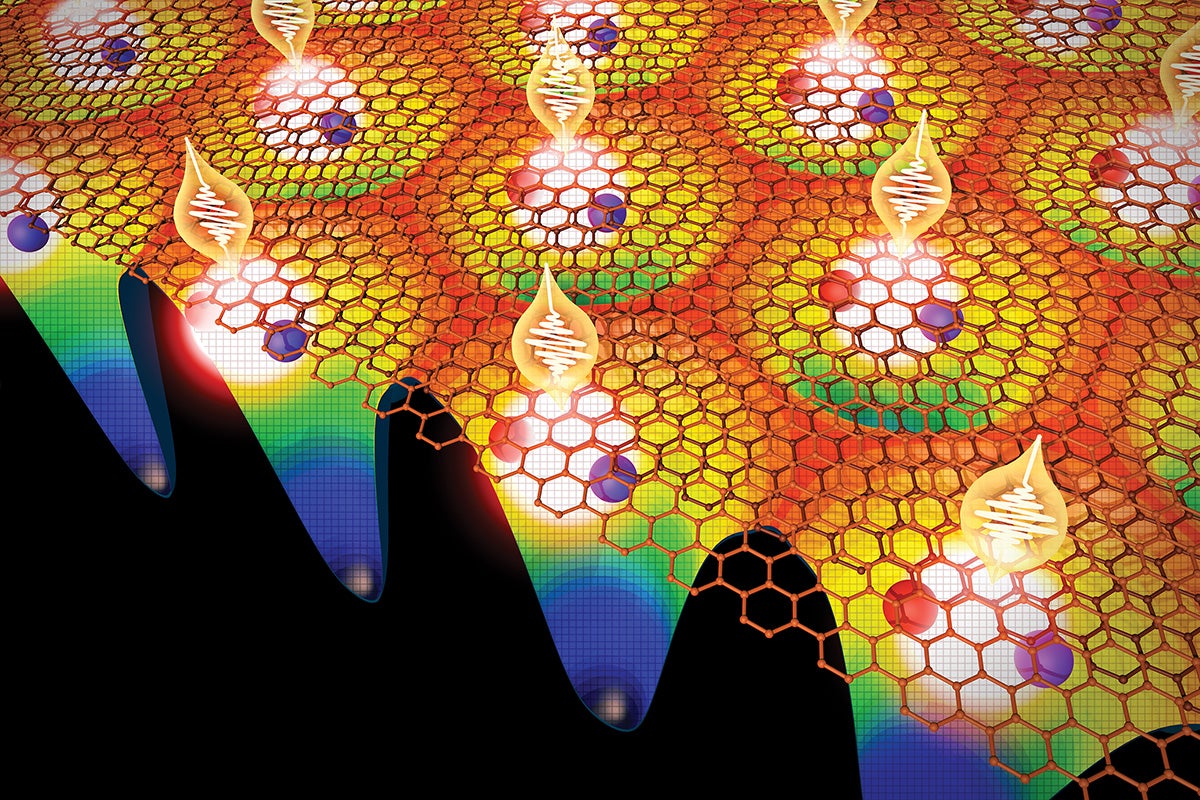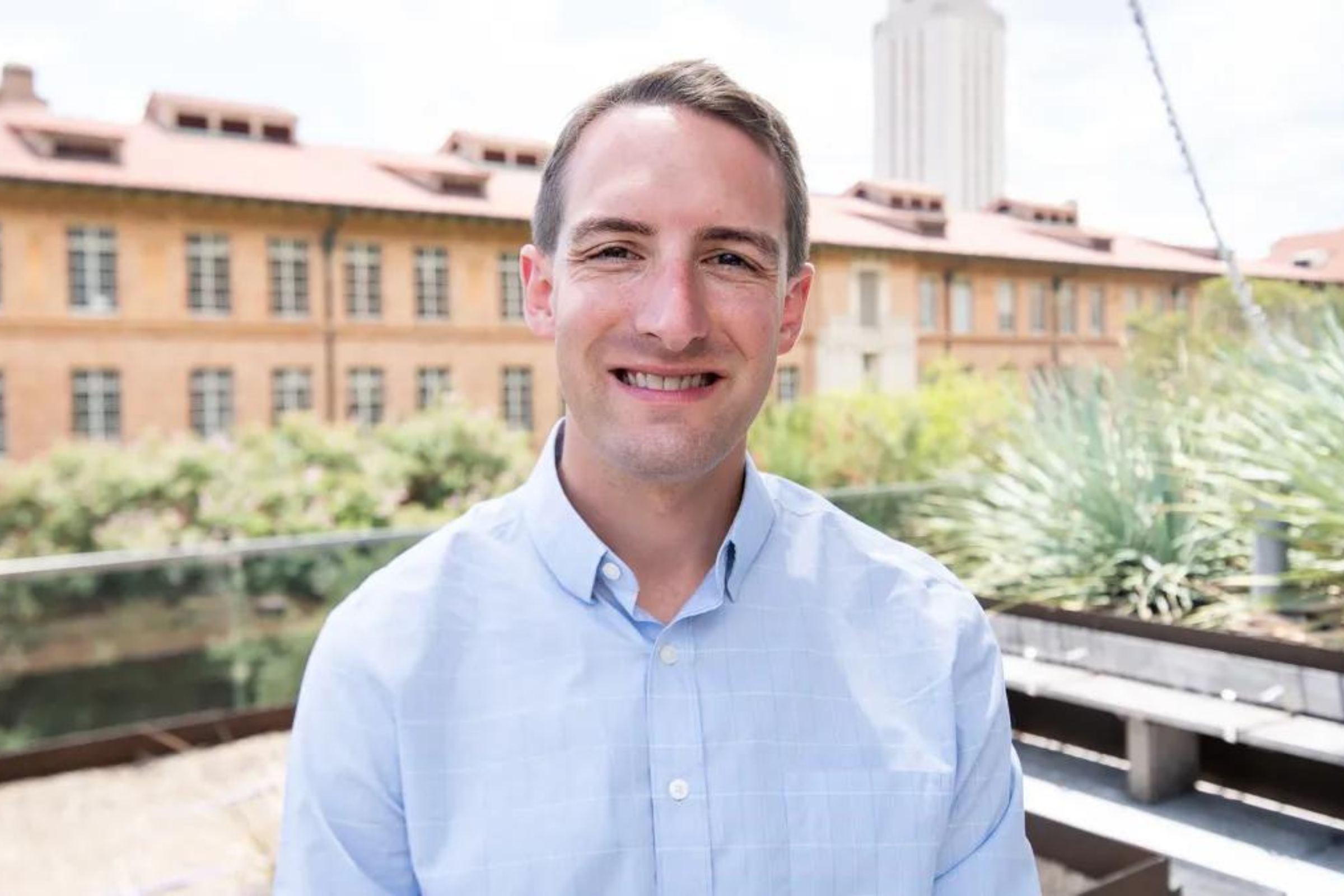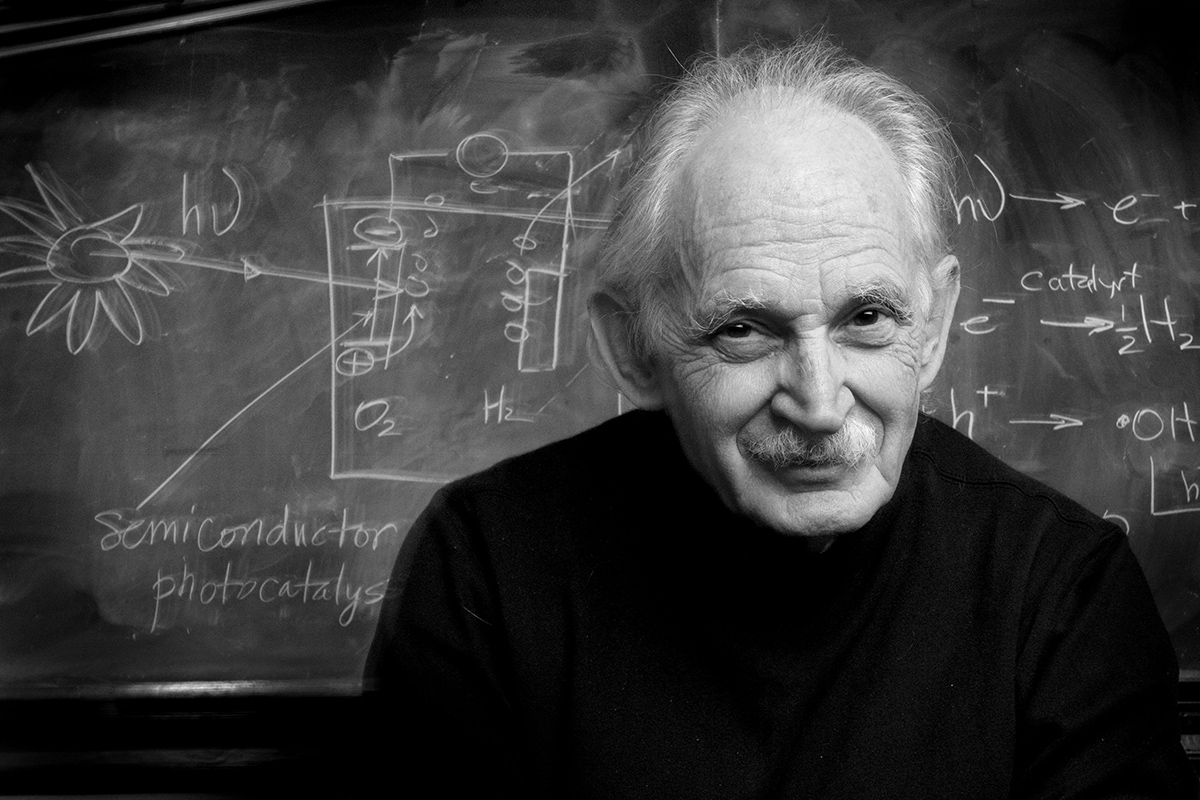Something remarkable happens when you deposit a particular type of fluorescent dye into a solution. The dye molecules quickly assemble themselves into almost perfectly uniform, microscopically small, double-walled tubes. Not only that, but these “nanotubes” have a structure that’s so similar to antennae found in a naturally occurring deep-sea bacteria that they could help unlock the secret to how these bacteria are so good at capturing and transporting the energy of the sun. And that, in turn, could help advance the development of solar technology.
“What’s interesting about the bacteria,” says David Vanden Bout, associate professor of chemistry and biochemistry, “is that they grow at great depths under water, where there are very, very low light levels. They’re really good at harvesting every last bit of light they see. And when you look at their antennae, where they grab the sunlight, what you see are long cylinders of chlorophyll molecules that look like these nanotubes. From an applied standpoint, imagine if we could learn how to be as efficient in capturing light and moving it to where it can be converted to chemical energy.”
Vanden Bout has recently conducted the first experiments to prove that these nanotubes, formed from a cyanine dye, are uniform in structure along both the length of each tube and from one tube to the next. Vanden Bout and his colleagues have also been the first to demonstrate how to transfer the nanotubes from an aqueous solution to a solid surface without damaging their structure. Both features—the uniformity and transferability—may bring closer the day when the nanotubes will be useful in various applications.
Vanden Bout and his co-workers from Humboldt University in Germany and the University of Groningen in the Netherlands published this work in the October issue of Nature Nanotechnology.
The uniformity of the tubes, says Vanden Bout, is particularly significant because solar technology depends not only on the ability of a material to harvest light but also the ability to transport the light energy to where it can be converted to chemical energy. The more uniform the tubes are, the further the light energy should be able to travel.
“The farther you can move the energy the better,” he says. “You’d like to have a process like photosynthesis, where you gather up the energy in one place, and do the chemistry in another.”
Now that they’ve mastered the process of transferring the nanotubes to a solid surface, Vanden Bout and his colleagues in Berlin, graduate student Då¬28e Eisele and Physics Professor Jrgen Rabe, are trying to understand more about what makes these tubes—and the bacteria they resemble—so good at capturing light, and more about how the energy that’s captured travels through the tubes.
“We want to know the intrinsic limits of their ability to harvest light energy,” he says. “We also want to look at the fundamental limits of the distance of the energy transport. Now that we can isolate them on a surface, we should be able to measure these things directly.”
Learn more about the Vanden Bout Group.
News and Highlights
From the Chemistry Department









